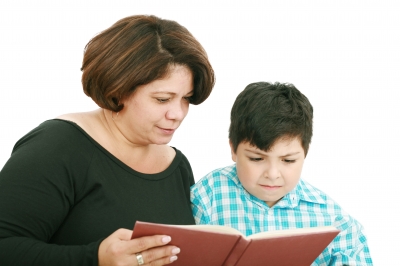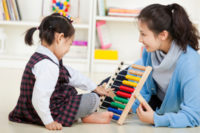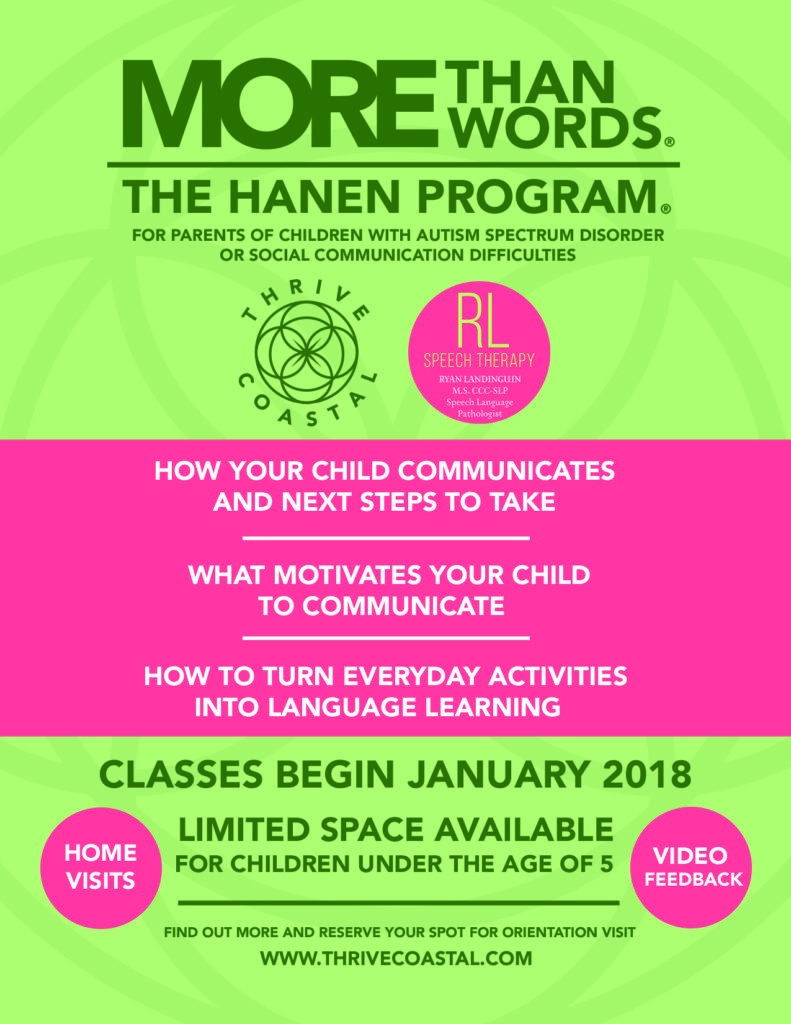You are likely reading this article on your computer or tablet. Maybe you’re even trying to read it on your phone! The reality nowadays is that we do a lot of our reading on screens.
While most of us began reading with paper books when we were children, today’s kids are exposed to both printed books and electronic forms of text, known as “digital media”. This could include e-books or stories on a tablet or computer screen.
Researchers have been starting to ask questions about the impact of digital media on our reading abilities, such as:
- How do we read on screens (versus paper)?
- Do we learn as much when we read on screens?
- How will young children’s reading development be affected by their early exposure to digital media?
Read on to see what experts have to say about these questions, and learn some tips for helping young children develop their early literacy skills with digital media.
How do we read on screens?
Our reading habits have changed in recent years [1]:
- People are spending more time reading nowadays, especially reading on digital media
- Many people print out electronic documents when they really want to read it thoroughly and/or take notes
- People have specific reading habits with screens, such as scanning and browsing the text, looking for key words, one-time reading and reading more selectively
- Online readers use an “F-shaped” pattern when they read – when we read paper texts, we read from left to right, line by line. But on screens, readers tend to scan using an “F-shaped pattern”. They first read horizontally across the upper part of the page (the top bar of the F), moving down a bit and reading across again (the lower bar of the F), and finally they scan the left side vertically (forming the stem of the F) [2]. Online readers also jump from topic to topic by clicking links.
- Most people like to read the first screen of text only and don’t scroll down the screen
- Less time is spent on in-depth, concentrated reading – jumping between topics means that people don’t pay attention to any one topic for very long, and this distracts readers from thinking deeply about a single subject
These types of reading habits suggest that when people are reading from screens, they want to quickly grab information and go. They avoid long paragraphs and instead are drawn to lists, bullets, and short bits of information [3].
Do we learn as much when we read on screens?
Researchers have questioned whether these new reading habits affect what we absorb when we read on screens.
- Some research shows no difference between paper and screens
- Alexandre Porion and his colleagues found that high school students’ understanding was the same whether they read a printed page or a single page on the computer (that didn’t require scrolling) [4].
- Sara Margolin and her colleagues found that young adults’ understanding was the same whether they read a short text (500 words) from either a computer screen, e-reader, or paper [5]
- Other research favours reading on paper
- Anne Mangen and her colleagues studied tenth grade students’ understanding of longer texts (between 1400-2000 words) when they read on paper or a computer screen [6]. Students who read on paper scored higher on reading comprehension tests.
- Another study by Mangen asked adults to read a short mystery story on either an e-reader or printed book [7]. Adults who read the printed version were better able to place story events in chronological order. When asked about their reading preference, most individuals preferred print.
- Arthur Santana and his colleagues provided college students with access to either the print version or an online version of the New York Times. The students were asked to remember as many headlines, topics, and main points as they could after 20 minutes of reading. Santana found that print readers remembered more news stories than the online readers.
Researchers have suggested some reasons why we may perform better on paper than with screens:
- While screens provide an endless stream of words (all we need to do is scroll), touching the paper and turning the pages of a paper document provides a map for the reader that allows him to see what he is reading in the context of the whole text [8,9]
- Online news readers likely scan stories whereas print readers may be more methodical [10]
- The placement and prominence of online news stories are constantly changing – this means there are fewer cues to help online news readers figure out the key daily headlines [10]
How will young children’s reading development be affected by their early exposure to digital media?
So far the research about reading on screens has looked at older students and adults who already know how to read. But what about young children who are just starting to read? Will all of this scanning, scrolling, and hopping from page to page influence their ability to learn to read? It seems that we don’t yet know what the impact of screens is on children’s early literacy skills [11].
Some researchers worry that digital reading may have a negative impact on our “reading circuit” [12]. While oral language develops naturally from interactions in humans, reading, on the other hand, needs to be taught. Learning to read depends on a rearrangement of already existing systems in our brain, like our language and visual abilities. With practice and learning, our brain can essentially re-wire itself and form a reading circuit, and this enables us to read [12].
There is the question of whether a lot of early exposure to digital reading will impact the development of this reading circuit and affect our ability to think deeply while reading. Because digital reading involves quick scanning and only a partial attention to the text, some researchers fear that people won’t have the time or motivation to think deeply about the meaning in what they read [13].
And it’s the children who are just beginning to develop reading skills that are of most concern. Children at this stage are just beginning to develop their reading circuit, and they need to learn how to pay attention to what they are reading and to think deeply about what it means [12].
Another concern is that e-books can be used independently by young children without adult-child interaction [14]. Most e-books are designed so children can click buttons, listen to the story, and engage with activities by themselves. But in order to develop early literacy skills, children need to have discussions with adults while sharing books together that provide explanations of new concepts and help them understand the story.
Ensuring young readers get off to a good start
The average child today spends nearly 45 hours per week with media, compared with 17 hours with their parents and 30 hours in school [15]. This means that media is having a huge influence on children. While we don’t know the full impact digital media will have on the next generation of readers, we do know some of what young children need in order to develop their literacy skills.
While sharing books with you, young children need to:
- interact with you – while it’s tempting to let your child enjoy electronics alone, try to engage with your child as he enjoys digital media. According to the American Academy of Pediatrics, “passive video presentations do not lead to language learning in infants and young children” [16]. It’s the two-way interaction between you and your child that helps him develop his language and literacy skills.
- take their time – while printed books provide children with a lot of time, digital media speeds up the pace [17]. Sitting with your child as he looks at an e-book or tablet and having discussions about the story will naturally slow down the pace. And be sure to pause and wait after you ask your child a question or make a comment about the story – this will let your child know that he doesn’t have to rush through this activity with you.
- have back-and-forth conversation – instead of reading a book from beginning to end without stopping, use the book as a time to have back-and-forth conversation with your child. When you make comments, provide explanations, and ask your child questions during the book, your child will develop a deeper understanding of the concepts in the story and connect what he knows with what he is learning from the book.
- think deeply about stories – the message from experts who are concerned about today’s young readers is that we need to develop their “deep reading” skills [12]. They need to learn to think deeply about stories, connect the story to their own experiences, think about why things happen, what might happen next, and how to solve problems in the story. You can help your child think deeply about a story using the “EE’s and PP’s” strategy from I’m Ready!™ [18]:
- Experiences – help your child connect the events in the story with things that have happened in his own life. For example, “She’s visiting her grandmother in the hospital. Do you remember when we visited Nana in the hospital when she was sick?”
- Explain – provide explanations about why things happen in the story, like “I think the chair broke because Goldilocks was too heavy”
- Problem-solve – help your child think of solutions to problems presented in the story by asking questions like, “How do you think she could find her way back home? Is there someone who could help her?”
- Predict – ask your child what might happen next in the story with questions like, “What do you think he’ll do next?” or “What will happen if he…?”
There’s no doubt about it – technology is here to stay. In order to make sure young children develop the literacy skills they need, we need to share books with them using some of the above tips, regardless of whether they are paper books or e-books.
For more information about developing young children’s early literacy skills, see our resource I’m Ready!™: How to Prepare Your Child for Reading Success.
References
- Liu, Z. (2005). Reading behavior in the digital environment: Changes in reading behavior over the past ten years. Journal of Documentation, 61(6), 700-712.
- Nielsen, J. (2006). F-Shaped pattern for reading web content. Retrieved online at: https://www.nngroup.com/articles/f-shaped-pattern-reading-web-content/.
- Redish, J. (2007). Letting go of the words: Writing web content that works. Morgan Kaufmann: San Francisco, CA.
- Porion, A., Aparicio, X., Megalakaki, O., Robert, A. & Baccino, T. (2016). The impact of paper-based versus computerized presentation on text comprehension and memorization. Computers in Human Behaviour, 54, 569-576.
- Margolin, S. J., Driscoll, C., Toland, M. J. & Little Kegler, J. (2013). E-readers, computer screens, or paper: Does reading comprehension change across platforms? Applied Cognitive Psychology, 27, 512-519.
- Mangen, A., Walgermo, B., & Brønnick, K. (2013). Reading linear texts on paper versus computer screen: Effects on reading comprehension. International journal of educational research, 58, 61-68.
- Mangen, A., Robinet, P., Olivier, G., & Velay, J-L. (2014). Mystery story reading in pocket print book and on Kindle: possible impact on chronological events memory. Conference paper presentation, IGEL (The International Society for the Empirical Study of Literature and Media), Turin, Italy, July 21-25.
- Myberg, C. & Wiberg, N. (2015). Screen vs. paper: What is the difference for reading and learning? Insights, 28(2), 49-54. DOI: http://dx.doi.org/10.1629/uksg.236.
- Jabr, F. (April 11, 2013). The Reading Brain in the Digital Age: The Science of Paper versus Screens. Scientific American. Retrieved online at: www.scientificamerican.com/article/reading-paper-screens/.
- Carroll, M. (September 15, 2014). Study Finds Print Readers Recall More Than Online Readers. University of Houston website. Retrieved online at: http://www.uh.edu/news-events/stories/2014/September/091514printvsonline.php.
- Hisrich, K. & Blanchard, J. (2009). Digital Media and Emergent Literacy. Computers in the Schools, 26, 240–255.
- Wolf, M., Ullman-Shade, C. & Gottwald, S. (2012). The emerging, evolving reading brain in a digital culture: Implications for new readers, children with reading difficulties, and children without schools. Journal of cognitive education and psychology, 11(3), 230-240.
- Wolf, M. (June 29, 2010). Our ‘Deep Reading’ Brain: Its Digital Evolution Poses Questions. Nieman Reports: Brain Power. Retrieved online at: http://niemanreports.org/authors/maryanne-wolf/.
- Hoffman, J. L., Paciga, K. A. (2014). Click, Swipe, and Read: Sharing e-Books with Toddlers and Preschoolers. Early Childhood Education Journal, 42, 379–388.
- Common Sense Media. (2008). Media and child and adolescent health: A systematic review. Retrieved online at: https://www.medpagetoday.com/upload/2008/12/5/TV_backup1.pdf.
- Brown, A., Shifrin, D. L. & Hill, D. L. (2015). Beyond ‘turn it off’: How to advise families on media use. AAP News, 36(10).
- Konnikova, M. (2014). Being a better online reader. The New Yorker. Retrieved online at: http://www.newyorker.com/science/maria-konnikova/being-a-better-online-reader.
- Greenberg, J. & Weitzman, E. (2014). I’m Ready!™: How to prepare your child for reading success. Toronto, ON: The Hanen Centre.






Leave A Comment